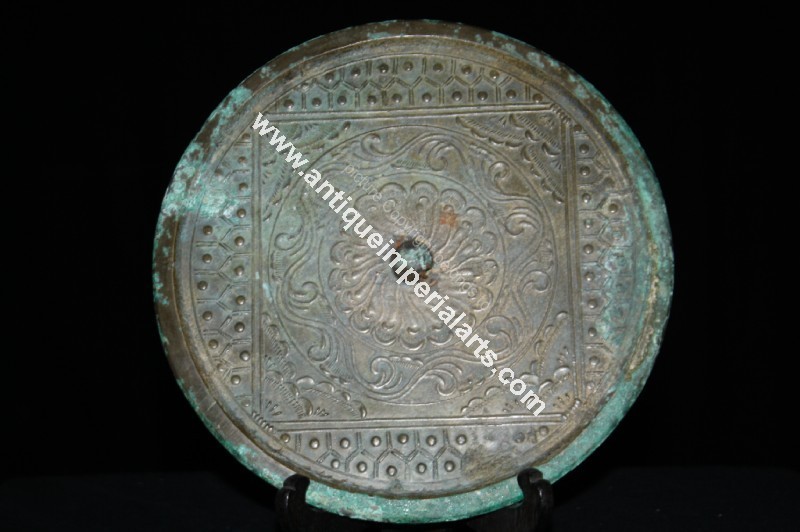

Thus although the characters are on the back, the face has faint lines too faint to be seen with the naked eye. Those who discuss the reason say that at the time the mirror was cast, the thinner part became cold first, while the raised part of the design on the back, being thicker, became cold later, so that the bronze formed minute wrinkles. The ancients must indeed have had some special art. But I do not understand why other mirrors, though extremely thin, do not 'let light through'.

I have three of these inscribed 'light-penetration mirrors' in my own family, and I have seen others treasured in other families, which are closely similar and very ancient all of them 'let the light through'. If such a mirror is exposed to the sunshine, although the characters are all on the back, they 'pass through' and are reflected on the wall of a house, where they can be read most distinctly. There exist certain 'light-penetration mirrors' which have about twenty characters inscribed on them in an ancient style which cannot be interpreted.

Even at that age, Shen Kuo struggled for an explanation: In Shen Kuo’s fascinating work The Dream Pool Essays, the 11th century Chinese polymath and statesman Shen Kuo describes three magic mirrors in his family heirloom. Two hundred years later, magic mirrors were already a mystery even to the Chinese. The secrets survived till the 8th and 9th centuries, at least, for there was a book titled Record of Ancient Mirrors, published during the 800s, which apparently contained these secrets. The art of making magic mirrors can be traced back to the Han dynasty (206 BC – 24 AD). In English they are called by various names such as “light penetrating mirror” or “magic mirrors”. The Chinese name for these mirrors is t’ou kuang ching, literally “light transmitting mirrors”. But when a bright light is shone on the mirror face and the reflected light is projected on to a surface, the pattern decorating the reverse face mysteriously appears in the projected reflection, as if the solid bronze mirror had become transparent. The polished surface appears normal and can be used as a regular mirror. It’s a polished bronze mirror with a pattern cast on its reverse side. For over a thousand years, a rare type of Chinese artifact has been baffling researchers.


 0 kommentar(er)
0 kommentar(er)
